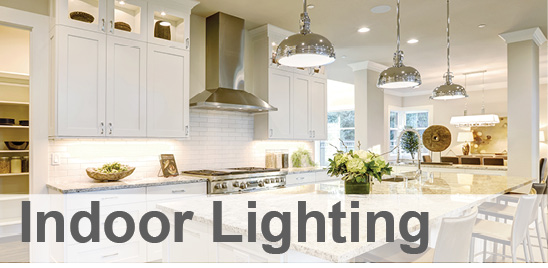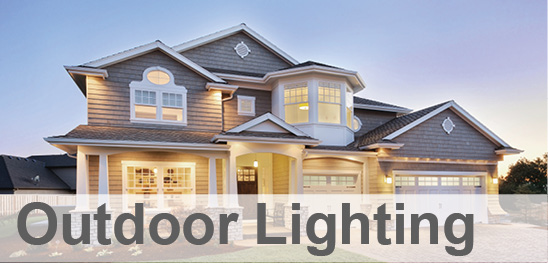
How To Buy LED Bulbs for Your Home
Lighting your home or business comprises around 15% of your overall energy bills. On average, $200 is spent each year to light your home. These numbers may not seem like a lot, but consider this—you can cut that expense in half with little cost and almost no effort on your part. By simply replacing incandescent lightbulbs with LEDs, you can significantly lower your home's energy costs and help reduce your carbon footprint
Light Bulb Comparison


Why can’t I get CFLs anymore?
CFLs were once the cutting edge of energy efficiency. So where did they go? The short answer is LEDs came along and made them obsolete. LEDs are more efficient, longer lasting, and safer than any other bulb on the market.
Brightness (Lumens) and Temperature (Kelvins) in LEDs
We typically think of the brightness of a lightbulb in wattage. However, wattage simply represents the amount of energy needed to use the bulb. The lumens scale indicates the brightness of a bulb and should be used when selecting your new LED. To save the most money on your electric bills, replace your bulbs with the lowest wattage for the desired lumens (brightness). We make it easy for you by listing the comparable incandescent wattage on every lightbulb product page.
Ready to make the switch? EnergyEarth is here to help make it easy for you. The lightbulb lumens to wattage chart below will help you understand which LED bulb is comparable to your current incandescent bulb. Simply take your current incandescent watts and select the corresponding LED bulb equivalent on the lumens brightness scale. Pay close attention to lumens, since this number indicates the brightness, or light output, of the bulb. To save the most energy, choose the bulb with the lowest wattage suitable for its usage.
| Electrical Power Consumption in Watts | Minimum Light Output in Lumens | |
|---|---|---|
| Incandescent | LED | |
| 15 | 2 - 3 | 0 - 200 |
| 25 | 3 - 5 | 200 - 300 |
| 40 | 5 - 7 | 300 - 500 |
| 60 | 7 - 9 | 500 - 700 |
| 75 | 10 - 14 | 700 - 1250 |
| 100 | 14 - 18 | 1,250 - 2300 |
The Kelvin Scale
Light color, or color temperature, is measured using the Kelvin scale. LEDs are available in warm colors (low k) to match the yellowish light of incandescent bulbs, but you can also choose cooler colors (high k) with whiter or bluer light. Here’s a color temperature chart for reference:

What Shape LED Should I Choose?
LEDs come in a wide variety of sizes and fittings. The most common are:
- A-shape: Maintains the same look as incandescent bulbs and are often used in fixtures where the bulb is visible.
- Globe: Just like the globes you already have, but more efficient. For use in bathroom vanities, pendant fixtures, and other areas where the bulb is visible.
- Semi Globe: Can be used in any fixture you would place a globe. These eliminate light waste by directing the light forward from the fixture.
- Reflector: Ideal for ceiling fans, recessed cans, and tracking lighting as these provide directional lighting to an area.
- Candelabra/Flame Tip: Perfect for wall sconces, some ceiling fans, and covered outdoor fixtures where candle lights are desired.
- Outdoor: Wet-rated, meaning they can be used outside in exposed fixtures without damage to the bulb or fixture. Most are reflector shaped, making them perfect for outdoor flood lights.
- 3-Way: Just like incandescent 3-way bulbs. These can switch between 3 light levels, making them ideal for many table and floor lamps. Only use LEDs that are specifically designated for use in 3-way sockets for optimal savings. (Different from dimmable bulbs)
- Dimmable: Made especially for use in dimmer switches. Avoid using non-dimmable LEDs with a dimmer switch as their lifespan will be reduced.
Click Indoor Lighting or Outdoor Lighting and use our chart to determine the type of bulb you need.
You will want to factor in your specific application and the type of fixture you have to ensure you select the proper bulb for your home.
How Else Can I Save Money and Energy?
Beyond replacing your old incandescent with LEDs, there are lots of changes you can make that will save you money and energy in the long run.
- Install dimmer switches to make your new lightbulbs last even longer and extend your savings.
- Add timers, smart LEDs, or smart plugs to your indoor and outdoor lighting to ensure you’re only using energy and spending money when and where you need it.
- Install a programmable or smart thermostat to help regulate your heating and cooling temperatures during peak usage times.
EnergyEarth has created this lightbulb buying guide to help you make an educated decision when it comes to updating the bulbs in your home. Can’t find the information you’re looking for? Contact us with any questions about LEDs or other energy efficient products for your home.






